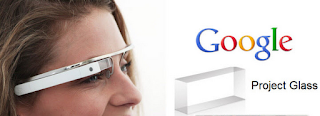Upcoming mobile designs are trending closer to the human body and could even end up inside it.
With pioneering efforts from some Ivy League Universities like MIT, Harvard or Stanford which are offering edX or free online access worldwide to some of their curricular materials to students with an internet connection, particularly on science and technology, we should see some amazing developments in the near future since the move seems to be aimed at preparing a large pool of technologists for many significant human-affecting breakthroughs that are going to start taking place.
At the same time, not only Google but also Microsoft and similar companies are moving rapidly towards defining what will become the next mobile trend that will replace smartphones and tablets as the ultimate device of personal choice for accessing the internet or engaging in social media and other kinds of user interaction.
From large computers occupying entire facilities, followed by "smaller" mainframes, to
desktop PC's and laptops, to our current mobile phones, we see that the size of these devices keeps getting smaller while their computing power runs higher every time.
A more compelling fact which does not go unnoticed is realizing how closer these devices seem to be getting to people's bodies, particularly to the chest and face areas. They have moved from occupying large spaces to desks, to users' laps, and eventually to their hands. It will just be a matter of time before they get inside the body.
Microsoft has recently filed several patents for a product that can be compared to Google Project Glass, which is basically a pair of computerized glasses. The idea is to use other parts of the body to control, and interact with, a computer. Sergei Brin was sporting a pair of those when he co-signed the Self-driving car bill earlier this year.
For its version of the product, the Redmont tech giant plans to use augmented reality where computer-generated sensory input such as sound, video, graphics or GPS data are mixed with views of physical, real-world environment elements. This is not to say that Google or the other companies working on this will not use this technology too, even if they don't seem to be doing it at the moment.
The evolution of these devices brings to our attention the fact that if they keep getting closer, more powerful or faster, the natural thing, for some people but not for me, would be to eventually place them beyond the outer surface of the skin. In other words, these devices could literally be embedded directly inside people's bodies, and could end up even in such places like the brain or the heart.
We have already seen real applications involving infrared and other technologies in which gadgets or chips get implanted inside a person's skin for reasons ranging from the superficial, such as placing them inside the arm to get admission into a night club, to other more complex ones. In some cases, these devices are used within the medical field in search for cures or to assist handicapped people.
Simultaneously, there is considerable research and experimentation currently being spearheaded by universities and private corporations focusing their objectives on subjects such as cyborgs, robotics or human-computer interaction. These areas of development and research are the ones that could get rather ambiguous and controversial if the argumentation supporting their development is not convincing.
In order to clearly define the limits of these technologies and to ultimately render them of service to us, substantial amounts of determined action as well as competent legislation would have to be implemented, otherwise things might easily get out of control and these remarkable advancements in science and technology could wind up in the wrong hands. It is a critical decision to channel this process in the right direction.
Copyright Esteban Dobronsky 2012 © All Rights Reserved
